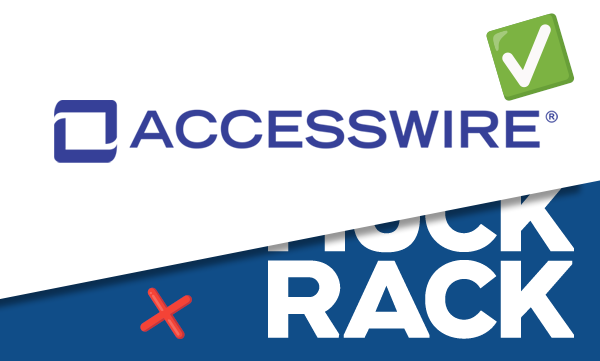A Study of The Great Resignation Movement
Unless you have been living inside a protective bubble for the last year or two, you have seen or read news stories about the 21st Century’s big labor movement: The Great Resignation. While there are numerous factors that have been attributed to people throughout the world who have walked away from their jobs, you are likely to get ten different answers if you asked ten people why The Great Resignation is happening.
Political and business leaders have struggled to understand why this mass exodus is happening now, but thanks to countless studies about this phenomenon, researchers are narrowing down the whys of this worker revolution – and the answers may surprise you.
So why are employees quitting their jobs? Are workers demanding higher wages, or are they looking for employment opportunities that are better aligned with what they deem to be important? Are they looking for jobs that allow them to work from home? What does it all mean?
The Massachusetts Institute of Technology Sloan Management Review published insights from a study the group recently conducted…and the answers to questions about The Great Resignation may surprise you because they don’t revolve around monetary compensation.
Five Reasons Why Employees Are Quitting
During the pandemic, there has been an incredible spike in resignations and rates of attrition across all industries. The key questions business leaders share about the high employee turnover rate are why and what management can do to end the resignation trend.
It is easy to assume that only service-oriented jobs at restaurants and retail organizations have withstood the worst of the resignations – in fact, these sectors of our society have practically been crippled by the lack of employees interested in filling empty positions…but there’s a lot more going on behind the scenes that tell a much bigger story about this current worker revolt; in fact, low wages came in at #16 on the list of cited reasons why employees had left their workplaces.
Looking at the Sloan Management Review data, which analyzed 34 million online employee profiles of U.S. workers who left their jobs for any reason (including quitting, retiring, or being laid off) between April and September 2021, the study cites the following as the top five reasons for walkouts:
- Toxic Corporate Culture. According to the MIT study, this reason is “by far” the strongest predictor of attrition, and as much as ten times higher than dissatisfaction with wages. “The leading elements contributing to toxic cultures include failure to promote diversity, equity, and inclusion; workers feeling disrespected; and unethical behavior,” the report says. Although one of the main Great Resignation reasons, this type of employee experience in the labor force can cause any person to leave their job at any time.
- Employment Insecurity. The study uncovered that employees who feel low levels of job security, or those who have been through organizational restructuring/layoffs, are more likely to investigate open jobs elsewhere, regardless of whether their current company is going through good times or bad.
- Too Much Innovation. This is quite an interesting result of the study, because…well, innovation in the workplace should be a PLUS, not a resignation reason, right? Wrong. “We found that the more positively employees talked about innovation at their company, the more likely they were to quit,” the study noted. The truth of the matter is that innovation is exciting and good for businesses, but it is also a major stressor to employees, especially when their work/life balance is affected. The result, all too often, is employee burnout.
- Ignoring Performance. As the study notes, “Employees are more likely to leave companies that fail to distinguish between high performers and laggards when it comes to recognition and rewards. Companies that fail to recognize and reward strong performers have a higher rate of attrition, and the same is true for employers that tolerate underperformers.” What that translates to is that recognition for a job well done is preferable to wage increases, and companies who show deference to undeserving employees foments resentment in those who work diligently and efficiently.
- Bad Response to the Pandemic. This can be seen as a recurring reason for the high employee resignation rates throughout the pandemic. Businesses whose leaders did not prioritize the health and well-being of all employees during the height of the Covid-19 crisis saw greater numbers of resignations than companies that instituted safety protocols, such as allowing employees to work remotely.
Ways to Fend Off Resignations
While the high employee resignation rates were a result of poor management practices, there are ways to improve and fend off resignations, from promoting diversity equity and inclusion in the workplace to offering better benefits. One positive part contained within the MIT Sloan Management Review is the suggestions for how companies can slow down, and possibly reverse, the tsunami of employees who are considering resignation; they are as follows:
- Provide Opportunities for Lateral Moves. Not all employees are trying to climb the corporate ladder to obtain C-level positions, nor do they necessarily want to take on additional tasks or responsibilities at work. Burnout is often linked directly to performing the same tasks week after week, and year after year. The MIT study says that lateral moves within an organization are “12 times more predictive of employee retention than promotions.”
- Offer Remote Work Options. One encouraging aspect of the pandemic was that leaders of companies who had been reluctant to allow employees to work remotely found that their staff worked well from their homes and performed better than if they had to deal with inconveniences like rush-hour traffic or having to leave early to pick kids up from school. “When employees discussed remote work options in more positive terms, they were less likely to quit,” said the study’s authors.
- Host Employee Social Gatherings. It’s no secret that employees feel as if they are an important part of a “work family” when they join their colleagues for events outside of an office setting. Happy hours, team-building exercises, attending sporting events, or corporate dinners serve to let employees know there’s more to their position than just work; rather, a sense of belonging is emphasized, thereby raising employee satisfaction and retention levels.
- Create Predictable Schedules for Front-line Workers. Another finding of the study showed that industrial employees with predictable schedules were six times more likely to remain with their current company, compared with those whose schedules are constantly changing. Interestingly enough, this finding did not apply to office workers in any notable way.
- Share Your Business News Regularly. There is no need for allowing former employees to control the narrative surrounding your company; share your news with the public to strengthen your brand while also ensuring there is something else out there for potential new talent to consider when they enter the job market. When you highlight such topics as recent hires, your Diversity, Equity, and Inclusion (DEI) initiatives, strides in your Environmental, Social, and Governance (ESG), or Corporate Social Responsibility (CSR) programs, you are informing your audience that your business has good stuff going on.
The best tool for sharing the positive things you have going on is ACCESSWIRE. Whether your company is large or small, public, private, or a non-profit, ACCESSWIRE will make sure your brand stays top-of-mind with your various audiences. Whether you're conducting a new hire press release or promoting the corporate social responsibility of your company, find out how ACCESSWIRE can help. If you are interested in learning about press release distribution services with ACCESSWIRE, click here to schedule a demo!
Similar Blog Posts



PRODUCTS
ACCESSWIRE | All Rights Reserved

